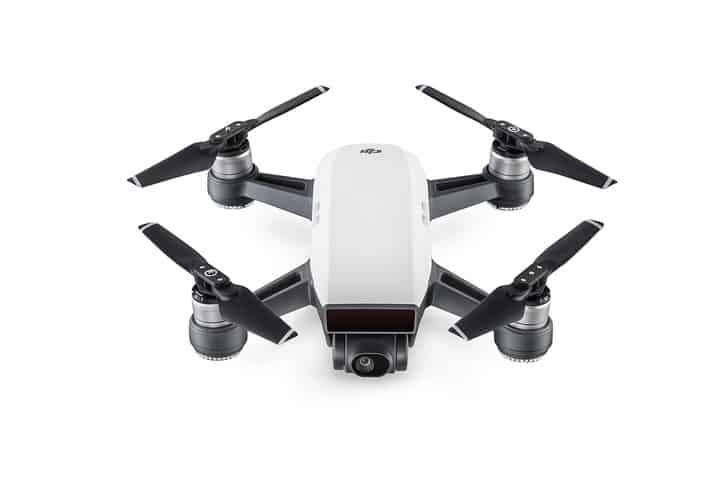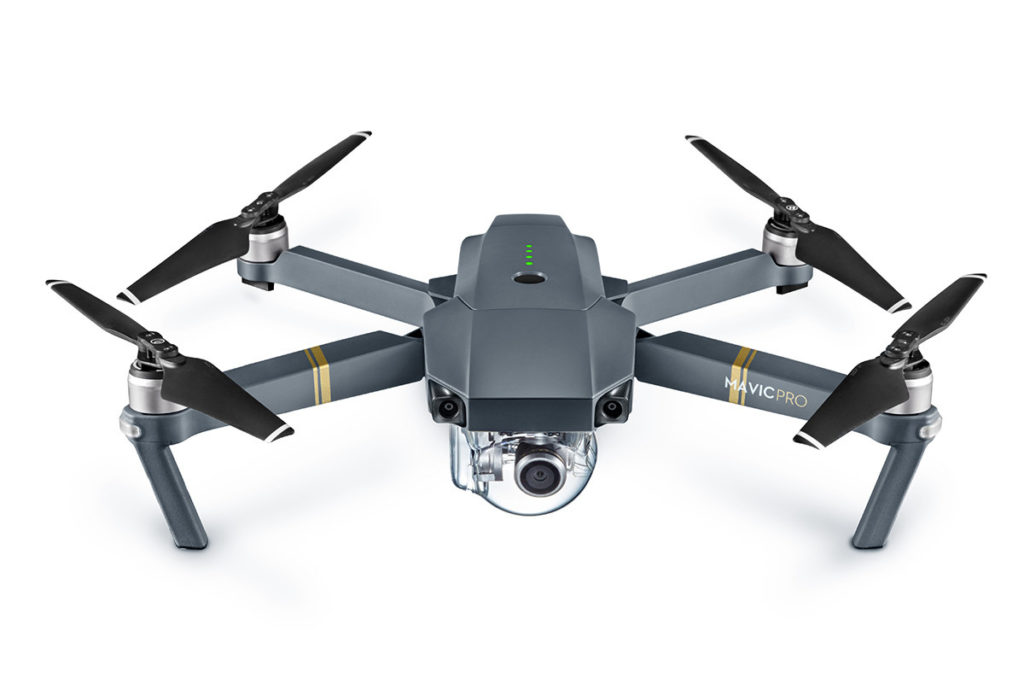The DJI Spark and the DJI Mavic: two incredibly robust and very portable drones. What’s not to like?
The DJI Spark Fly More Combo(which has extra accessories) costs somewhere in the $700ish range, and the Mavic Fly More Combo costs somewhere in the $1300ish range.
Which begs the question: how are they different? What differences will I truly notice? Which one should I get?
These are some of the questions I’ll try to answer. I was recently on the fence between a Spark and a Mavic, and due to budget constraints, I ended up getting a Spark, but there were stark differences I began to notice between my use of the Spark and what I’ve seen and read about the Mavic.
These are the kind of differences that you wouldn’t easily notice by reading two independent reviews, but only by actually flying the craft. And those are the thoughts I’ll try to share with you here.
Get a DJI Mavic Pro Fly More Combo
Get a DJI Spark Fly More Combo
But before I get into comparing the individual features side by side, a quick overview:
Overview: DJI Spark and DJI Mavic, similarities and differences
Fundamentally, the DJI Spark and Mavic are two different animals. The Spark is a drone that is geared towards casual drone users who want to take cool selfies and Instagram pictures, whereas the Mavic is tailored to professional filmmakers who can do some real magic with it.
Although basic features may seem similar at an initial glance, there are some differences which make the Mavic a far superior aerial photography platform. The most obvious one of course is that the Mavic has a 4K camera, whereas the Spark has a 1080p camera.
So you may be thinking: man, I don’t really need a 4K camera. I don’t even have a 4K TV! And my computer is never going to be able to handle processing large 4K files. So what’s the big deal about 4K?

I’ll go out and say this – unless you’re a filmmaker, at this point, you really may not need 4K. 1080p will be more than fine, and by the time you upload to YouTube and compression has had its way, you may not notice the difference.
In the air, you may not really notice that much of a difference between the Mavic and Spark – aside from the fact that the Mavic is a faster aircraft. Both have GPS position lock, and DJI has done an awesome job of optimizing their stabilization and navigation algorithms.
The Mavic and Spark both have sensors and cameras which help maintain position and avoid colliding with obstacles. Both drones are very good at holding position even without a GPS fix and the front collision avoidance is robust, too.
I’ve flown my Spark up to 400 feet where it is a lot windier than it is on the ground and the image just looks rock solid – even if I took a picture, it wouldn’t even be the slightest bit blurry due to shakes. That’s how stable it is.
I would imagine that the Mavic is just as, if not most certainly more stable.
So aside from the camera, where else do stark differences really begin to show?
1) Connection between remote and drone
The DJI Mavic and DJI Spark use two different technologies to connect the remote to the drone. That’s why the DJI Spark has comparatively limited range at up to 2km, and the Mavic has a far greater range of up to 8km.
Please note that these are in ideal conditions – no interference, no disturbance, just open sky and land. In real world situations near cities/buildings/mountains/trees, you may see that your range is less.
The Mavic uses what DJI calls OccuSync technology to transmit HD video and RC control to and from the drone.
The Spark uses an enhanced version of regular ol’ WiFi.
Flying the Spark, you’ll see that the video gets choppy at times if you go too far out or behind an object. I would imagine this would happen at some point with the Mavic, too, but it would be far less frequent and noticeable.
Another thing is that your phone or tablet connects to the Spark remote using WiFi – there is a hack where you use an OTG cable, but there is only one version of the DJI app that works with it. Later versions have some issues with displaying flight data correctly.
So there are essentially two WiFi connections simultaneously. Interestingly enough, with an Android phone, the video was very choppy, but with an iPhone, the video was flawless, even when I took off in the middle of a city to get some photographs of a building(with permission of course).
In the DJI Mavic, the phone/tablet connects to the remote using a USB cable, which totally eliminates any latency between the remote and the phone.
The Mavic also has something called dual remote controller mode, in which one remote is given priority and the other remote has secondary control. Both remotes can control the drone and gimbal, but the main remote can override the inputs of the other one in case the experienced pilot needs to take control. This is a great way to collaboratively take aerial images.
As far as range is concerned, I feel it is a bit of a non-issue. Realistically, you’re never going to fly your drone out to 8km – your battery won’t be able to fly that far out and back. At most, you’d go maybe one or two kilometers, which the Spark and Mavic can both handle very easily.

2) Battery life
The Spark is a much tinier drone than the Mavic, and so it has a tinier battery. The Mavic has an advertised flight time of 25 minutes, whereas the Spark has an advertised flight time of 15 minutes.
In a real world situation, I get about 10-12 minutes of flight on my Spark – I would imagine you’d get around 20 minutes with a Mavic by the same logic.
For a drone racer like myself, 10 minutes of flight seems like A LOT! My racing drones get about 2.5 to 3 minutes in the air. This is three times as much!
However, when you’re taking photographs or shooting videos, framing the shots and positioning yourself takes time! I have begun to feel that 10 minutes is a little tight to be able to get all the shots I need, and if I had another 7 to 8 minutes in the air, it would be far easier to take photographs much more comfortably without the fear of having to come back safely with enough power left in the battery.
I have two batteries right now, and a third on the way, which will enable me to fly about 30 minutes at a stretch – but I could probably fly 40 minutes with just two Mavic batteries!
3) Speed
The Mavic has 8.3 inch propellers, and the Spark has 4.7 inch propellers. The Mavic is a faster drone than the Spark.
As far as shooting videos go, slower is generally more cinematic, but at times, you either want to get to your location faster or come back home faster!
In those situations, you’ll feel the difference in the speed of the Mavic vs the Spark. It’s certainly not a dealbreaker, though, and when you enable Sport Mode, the Spark can do a respectable 25 or so miles per hour, whereas the Mavic can do about 30 miles per hour.
4) Gimbal
The Mavic and Spark have different gimbals – the camera stabilizing mechanisms. The Mavic has a 3 axis mechanical gimbal, and the Spark has a 2 axis mechanical gimbal.
3 axis stabilization allows for smoother turning and yaw spins.
The Spark does have stabilization on the 3rd(yaw) axis, but it does this in the software.
Honestly, from a hobbyist’s perspective, I have not found that the Spark gimbal is bad at all. In fact, the video I’ve shot with it so far is SUPER SMOOTH and being a hobbyist(not a pro), I can barely tell the difference.
The gimbal is not a dealbreaker unless you’re a filmmaker who needs super exact stabilization in their shots. For everyday flying and getting super smooth video while you’re at it, the Spark gimbal is more than enough.
5) Gesture control and flying without a remote
Here’s one area where the Spark outperforms the Mavic!
You can fly the Spark and Mavic with just your mobile phone, and you can use gestures to get your Spark to take pictures and your Mavic as well.
But you can fly the Spark completely independent of a phone or a remote. You simply power on, press the power button twice while holding it out in your hand in front of your face, and the camera will pick up your face, activate, and the drone will take off.
You can then control the drone’s flight with your palm – take a few selfies, record some video, and hold your palm underneath the drone to get it to land.
How cool is that?
It’s a great way to snap a quick picture when you need to. It’s not something you’ll use every day, but it sure is convenient and fast to be able to take off so quickly, take a quick picture, and land again!
So which one should I get?
Honestly, if you’re looking to buy an aerial photography copter as a hobbyist, it just boils down to your budget. If you have the cash, most definitely go for the Mavic. It’s as portable as the Spark when it is folded up, and is a far more robust and capable drone when you wish to push it to the max.
But if you’d rather spend a little less while still getting the flying and aerial photography experience, then the Spark is still a solid choice – I have had loads of fun with it and taken some shots of breathtaking scenery. This footage is all from a Spark:
I went for a Spark first because I did not really know how much I would use a photography drone, and didn’t want to tie up such a large amount of cash into a Mavic. If I had more cash lying around at the time, I would have bought a Mavic.
Leave a Reply
You must be logged in to post a comment.